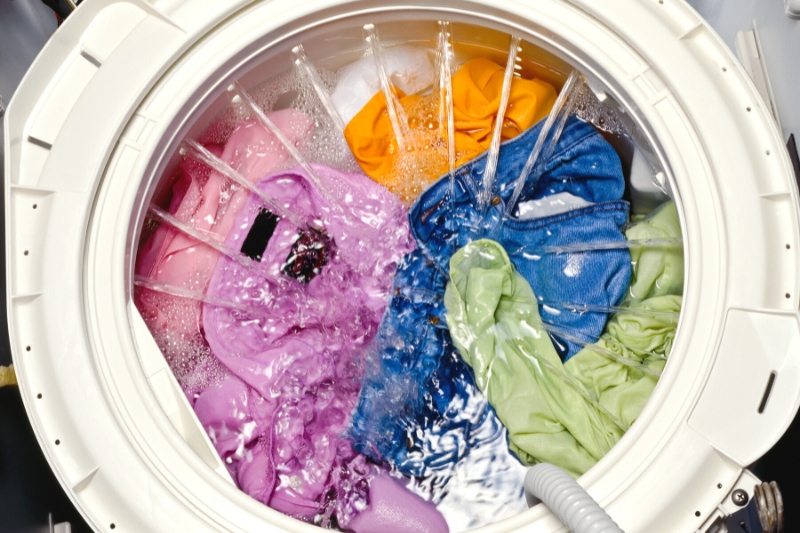Washing machines are a staple in most homes, but to really reap the rewards a washing machine offers, you’ve got to get a handle on all the cycles it has, and there are usually quite a few of them!
One cycle in particular often gets tongues wagging: the rinse cycle.
So, what is a rinse cycle on a washing machine?
When laundry is cleaned on a standard wash, it generally goes through three cycles: wash, rinse, and spin.
A rinse cycle is typically part of a full washing programme, and its purpose is to remove excess dirt and suds from laundry by rinsing it with clean water.
The rinse cycle takes place after your clothes have gone through the ‘wash’ phase (when detergent and fabric softener make contact with your laundry).
But just before the rinse cycle starts, the washer drains all the dirty soapy water away, so the drum is empty.
Once all the grime and detergent/softener filled water is gone, the washer refills the drum with fresh water, and so the rinse cycle begins.
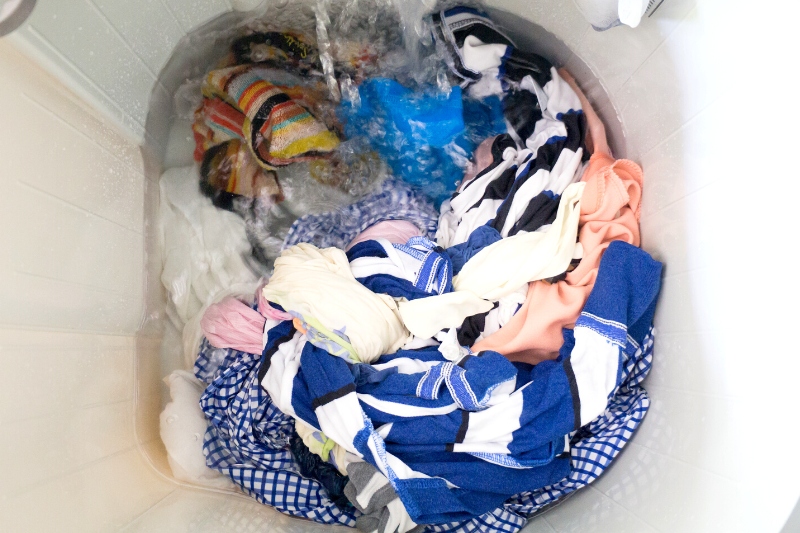
The clean water sloshes around and all over the just washed laundry and removes any lasting dirt and soap from the garments.
No detergent is added to the washer’s drum during the rinse cycle—it’s just plain water. Once a single rinse cycle is done, the next cycle takes place: the spin cycle (removes water from laundry).
In general, a rinse cycle takes between 15-20 minutes, but this does vary from one manufacturer to another. Plus, the size of the load and the water pressure where you live can also determine how long it takes.
A rinse cycle forms a critical part of the washing process because if you don’t remove the excess detergent/fabric softener and grime from your laundry, it will become stiff and stained.
Sometimes the residue coated fabrics in question, can irritate your skin and may cause a flare-up of an existing skin condition.
Plus, the materials may even end up damaged if they’re continuously exposed to too much detergent and they’re not being rinsed effectively!
So, it’s essential that you make sure your laundry goes through a rinsing process!
How Many Rinse Cycles Do You Need to Use?
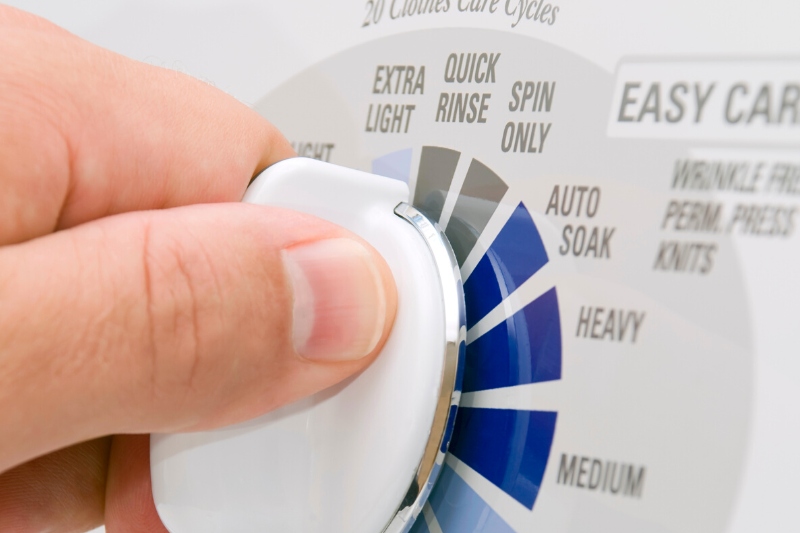
As noted above, the rinse cycle is normally part of a larger washing routine, so you only need to use one automatic rinse cycle in most cases.
This single rinse cycle should be able to dislodge the lasting grime and soapy/waxy residue from most fabric surfaces.
In turn, the laundry should feel soft, look clean, and should have a longer lifespan because it has been taken care of correctly.
However, there is scope to use a second rinse cycle, but this isn’t essential in most cases. You may need to use an additional rinse cycle when:
- If you have a very big load of laundry, you may need to run it through an extra rinse just to remove any lasting soapy residue and grime from it.
- If you went overboard with the detergent, you might need to run another rinse cycle just to remove the excess suds or white marks from the laundry.
- If you use a very sudsy kind of detergent, you may have to rinse your clothes again, so you can remove the residue from them. If clothes are coated in detergent and/or fabric softener residue, they can become stiff and uncomfortable to wear.
- If someone has sensitive skin in your home, you may want to run their clothing through an additional rinse just to make sure all the soap/potential irritants have been cleaned off.
It’s possible to select an ‘Extra rinse’ cycle on some machines before the whole washing process begins.
This is particularly helpful and can save you time if you know for definite that you cover one (or more) of the points raised above. But in other cases, you’ll have to manually start an additional rinse cycle on your washer.
There’s usually no need to do more than two rinse cycles, as the water from two rinse cycles should be able to clean the material sufficiently during this time.
In addition to this, it’s better for your wallet and clothes if you run cold rinse cycles!
Common Myths About Rinse Cycles
“A rinse cycle is a wash cycle”
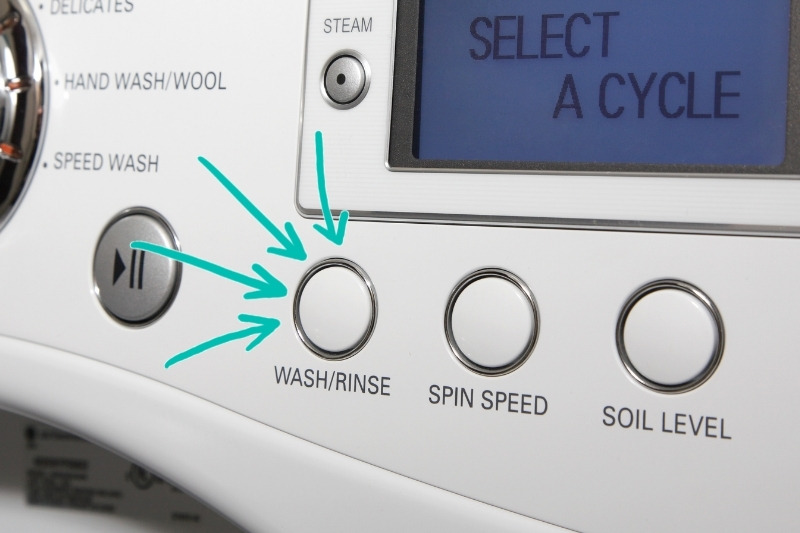
A rinse cycle is not a wash cycle. These two cycles serve different purposes and shouldn’t be mixed up!
Namely, the wash cycle is used to clean your clothes. This is when your clothes are covered in detergent and water, and they are agitated inside the machine’s drum.
In contrast, the rinse cycle removes sudsy residue and remaining dirt from your laundry after the washing phase.
If you have trouble telling the difference between a rinse cycle and a wash cycle, think of them like this: the wash cycle is when you clean a dish in the sink with soap and water, and the rinse cycle is when you hold the dish under the cold water tap to remove the suds from it!
“A rinse and spin is the same as a drain and spin”
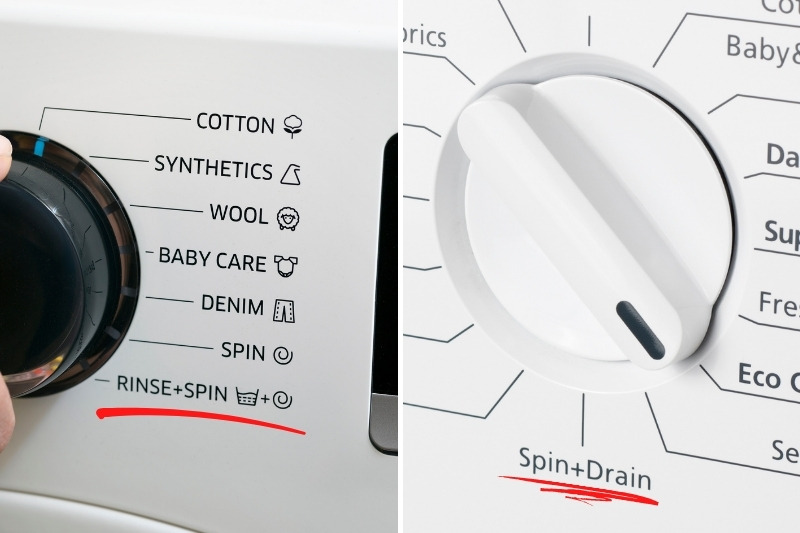
A ‘rinse and spin’ is not the same as a ‘drain and spin’ cycle.
The main difference between these two is: a ‘rinse and spin’ is when you rinse any detergent off your clothes with clean water, you drain the water away, and then you spin said clothes really quickly in the drum to remove excess water from them.
A ‘drain and spin’, on the other hand, completely misses out on the rinsing process, and just spins the clothes really quickly in the drum to remove moisture from them. The excess water is then drained away.

Bethan has a passion for exploring, reading, cooking and gardening! When she’s not creating culinary delights for her family, she’s concocting potions to keep her house clean!
